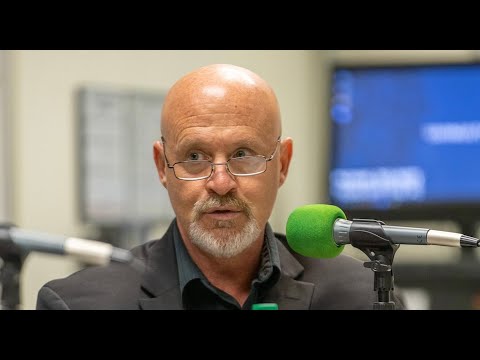One of Sydney’s busiest hospitals is reeling and a young couple are devastated after a newborn baby on Sunday became the sixth infant to die unexpectedly in the space of roughly two years.
The latest death of a baby at Blacktown Hospital in western Sydney comes months after midwives walked off the job in protest, and some 20 obstetricians threatened to quit, if staffing issues were not resolved.
But according to the nurses’ union and the hospital, the ward was fully staffed over the weekend at levels agreed to with state health officials during crisis talks in the wake of the previous death late last year.
“Can I just extend my heartfelt condolences to the family of that little baby,” NSW Premier Gladys Berejiklian said on Wednesday.
“The Minister for Health Brad Hazzard and the health agencies will undertake all the required investigations.”
Opposition health spokesman Ryan Park told the ABC that he would be speaking to the relevant unions to better understand how the “absolute tragedy” happened and that the community would be demanding answers.
But Mr Park said he acknowledged staffing levels at the hospital had improved.
In November, NSW Health Minister Brad Hazzard said he was ordering a full review into the procedures at the hospital in the wake of the fifth newborn death since mid-2019.
Mr Hazzard’s office did not respond to a request for comment on Wednesday about the latest death or the status of the hospital review.
WARD WAS ‘FULLY STAFFED’
NSW Nurses and Midwives’ Association general secretary Brett Holmes told news.com.au in a statement on Wednesday that “some significant progress has been made at Blacktown Hospital, but every death is an enormous tragedy, and our sympathies go out to the family and the staff who feel these tragedies as they occur”.
“Our members have told us staffing over the weekend was within the agreed levels that we have worked with Western Sydney Local Health District, since our industrial dispute last year,” Mr Holmes said.
“Last year there was agreement by the LHD to increase the number of midwives by 15 and they’re very close to the recruitment of those midwives, albeit many of those are beginning practitioners.”
He added, “The LHD is continuing to work constructively with us, in trying to restore Blacktown Hospital to the best possible care delivery that can be provided to the local population.”
After the fifth baby died in November, the union demanded the state government step in to “address the crisis in the maternity ward” with additional midwives.
In a statement on Tuesday about the latest tragedy, Blacktown Hospital said since October last year it had hired 15 additional midwives, three senior medical officers and four junior doctors, with “more appointments still to be made”.
“At the time of the incident on March 12, the ward was fully staffed, which included full medical and midwifery coverage,” a Blacktown Hospital spokeswoman said.
“The death of a baby is a tragedy. Our thoughts and deepest condolences are with the family, who are receiving bereavement support at this incredibly difficult time.”
But the union in December last year warned that the while the promised 15 extra midwives was “a step in the right direction”, it was concerned “it will not be enough to address the very high workloads our members currently face”.
From 2015 to 2020, births at Blacktown Hospital increased by 52 per cent, while staffing only rose by 11 per cent, union figures showed.
“Not only are they burning out with fatigue, many of the midwives have been traumatised by tragic deaths and believe the staffing issue has become untenable, putting their professional registrations at risk,” Mr Holmes said last year.
Multiple investigations are now underway into the latest death – a so-called root cause analysis (RCA), which is conducted by NSW Health’s Clinical Excellence Commission, and an internal probe by the hospital.
“The hospital general manager and the women’s and children’s nurse manager have met with the family and assured them a root cause analysis is underway,” the hospital spokeswoman said.
“All RCAs are referred to NSW Health and the Clinical Excellence Commission. In addition, an internal investigation into the infant’s death has also commenced. Western Sydney Local Health District follows a rigorous process to ensure we identify, investigate, and learn from incidents that occur in our hospitals.”
The spokeswoman added that a dedicated operating theatre had been opened at the hospital to provide “improved access for emergency caesarean sections”.
YOUNG PARENTS GRIEVING
The Sydney Morning Herald today revealed further details of the baby boy’s death.
According to the newspaper, the couple aged in their 20s arrived at the hospital on Friday evening. The mother was just over 38 weeks pregnant.
She was induced on Saturday morning as a precaution due to a pre-existing medical condition and laboured through the day, but just after midnight the baby’s heart rate suddenly dropped.
Staff attempted and failed to deliver the baby with forceps, before performing an emergency caesarean section. The baby died between midnight and 2am on Sunday, the newspaper reported.
“They never expected such a thing to happen,” a friend of the couple told The Sydney Morning Herald. The friend also said the parents believed everything was OK during the process and the staff did not seem worried.
Last year, one doctor told The Australian they thought the death of a newborn at the time was “avoidable”. “The infant missed out on the opportunity for an emergency caesarean section,” the doctor said. “There are clear system factors involved.”
The Australian reported that death occurred following a 39 weeks pregnant mother going into labour. It was reported she felt unwell when taken to hospital and that the baby had a normal heartbeat in the morning. However, that afternoon clinicians checked and could not find a heartbeat.
Speaking to The Guardian in November, a senior obstetrician from the district said Blacktown was one of the fastest growing areas in the country and demand for services had grown as a result.
“The complexity of the cases has increased,” he said.
“There’s a high Indigenous and non-English speaking community, and changes have occurred around maternal transfer procedures so Blacktown is taking a higher load of more complex obstetric cases. So you have a perfect storm of all these things happening and there have not been the staffing enhancements needed to keep pace with that.”
He added, “Blacktown serves a high-needs population and it’s important it has a strong and viable public obstetrics and gynaecology department. That’s what everyone agrees women deserve.”
– with NCA NewsWire






